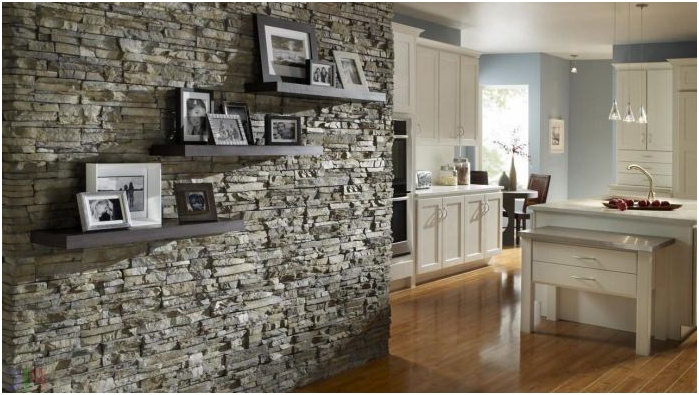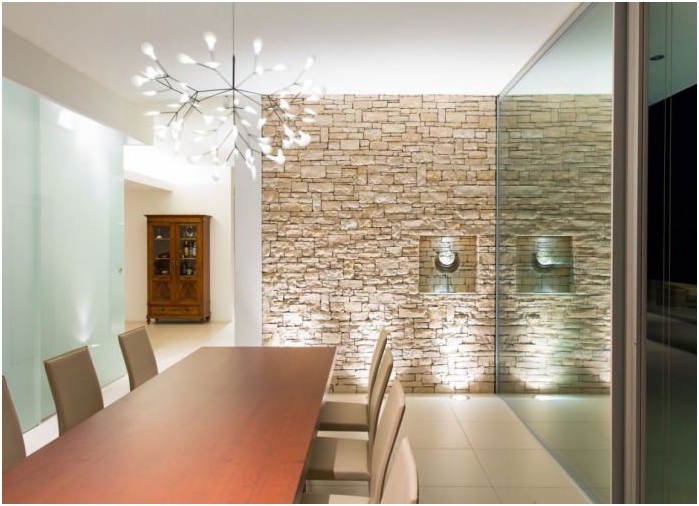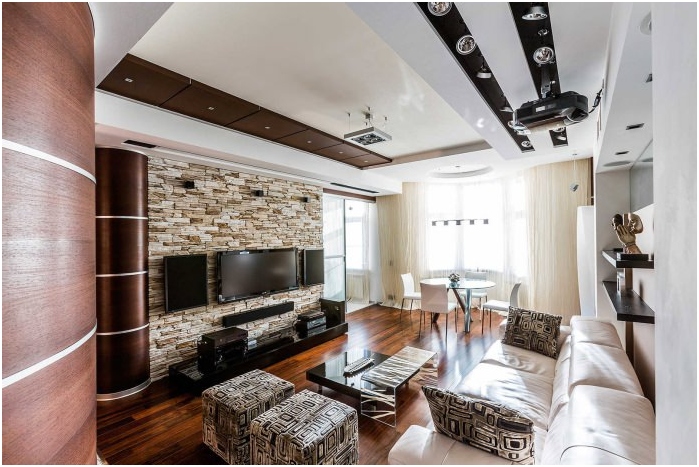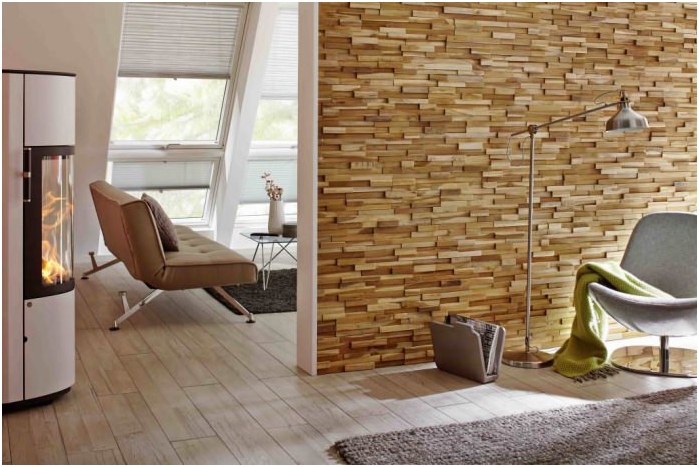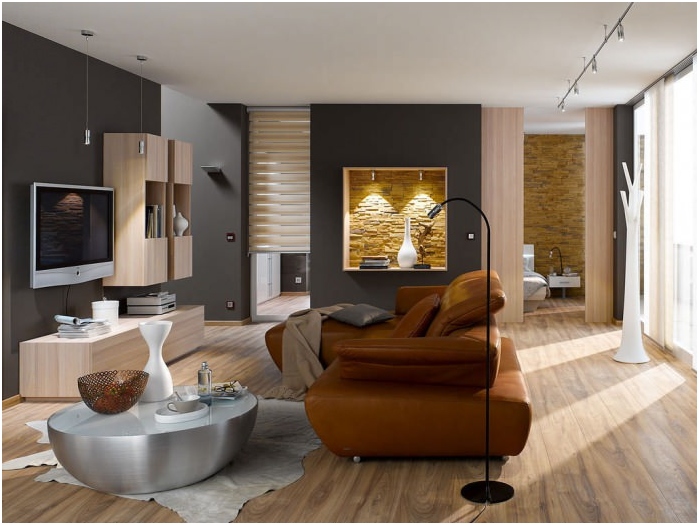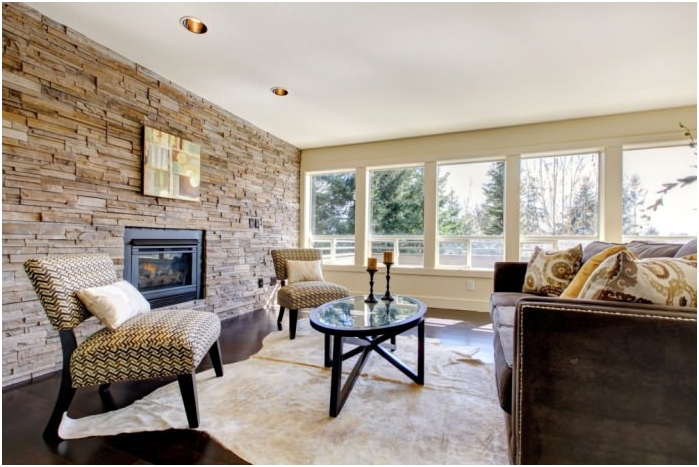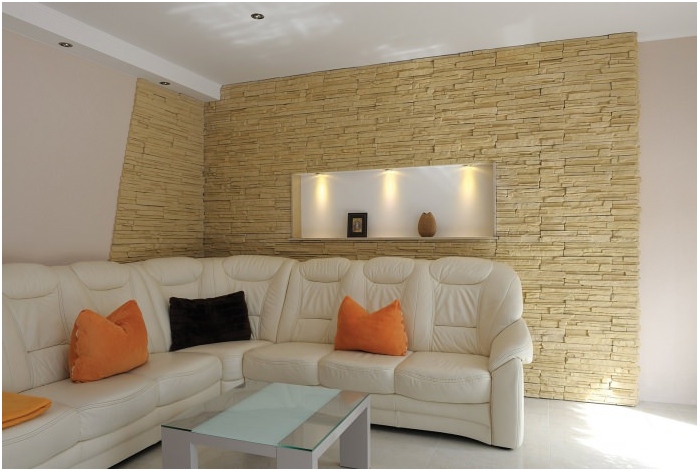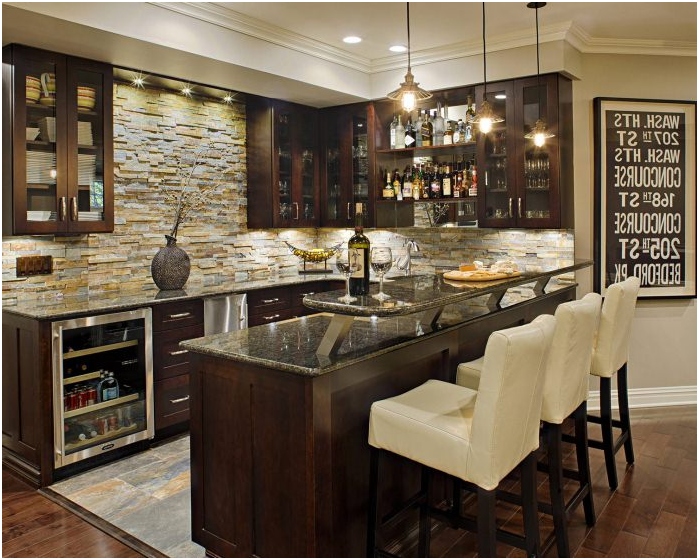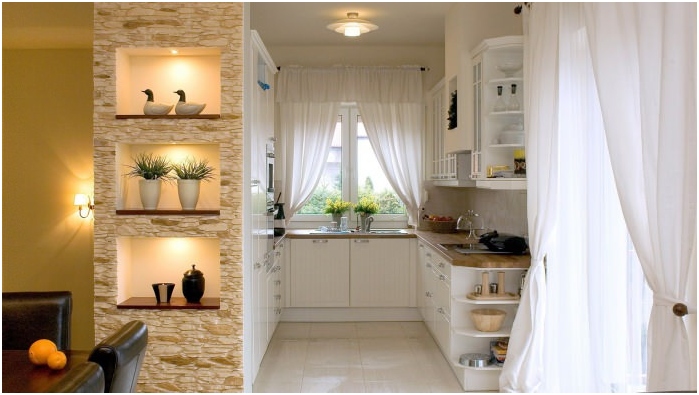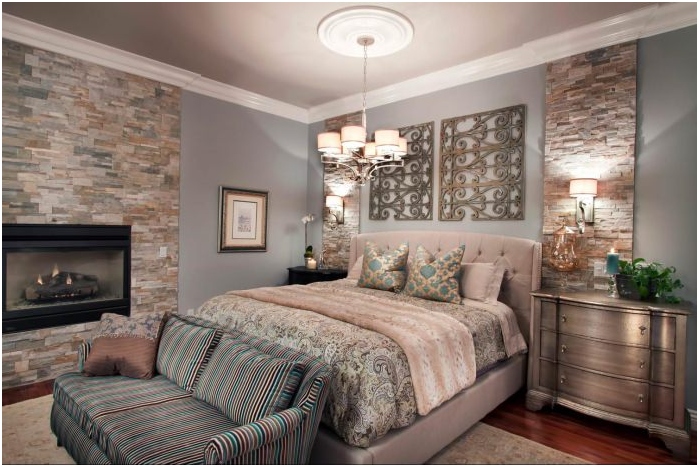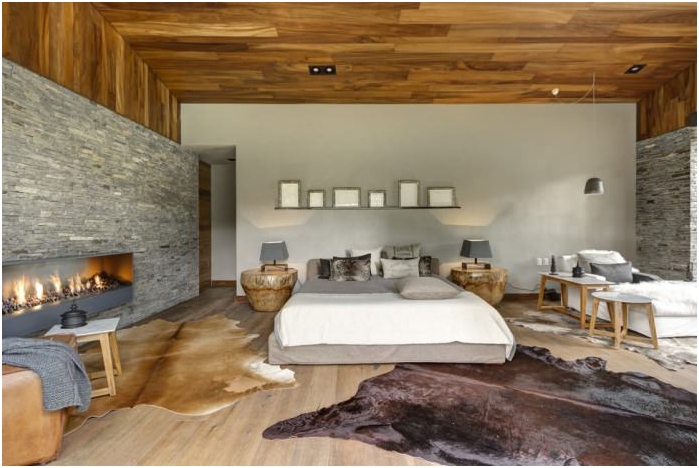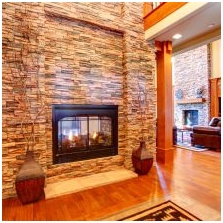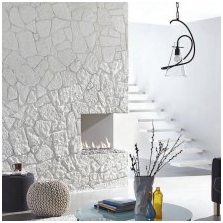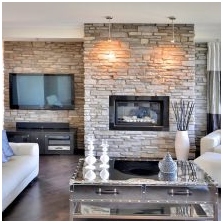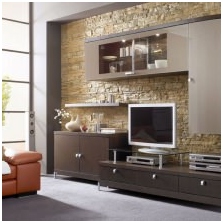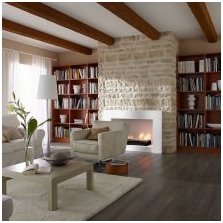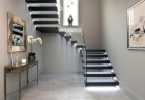Decorating an interior with decorative stone is a great way to make it unique, unique and sophisticated. The versatility of the stone allows you to use it in a room for any purpose, both in the living room, kitchen, bedroom, and in sanitary facilities..
Decorative stone, both natural and artificial, is used to decorate walls and floors, window sills, countertops, large decorative objects – vases, fireplace portals and more – are made from it. The use of artificial decorative stone in the interior is preferable – besides the fact that it is a much more budgetary material than natural stone, it allows you to make objects of complex shapes and large sizes.
Decorative stone production process
The process of creating an artificial stone takes place in several stages. First, a composite mixture is created from polymeric and crushed natural materials. Then this mixture is poured under pressure and at elevated temperature into prepared molds and pressed to obtain the desired products. At the same time, you can get almost any color and texture of the finished stone, both imitating natural and deliberately “artificial”, bright – designers use them when creating interiors of modern style trends.
When decorating an interior with decorative stone, the following types of artificial material are most often used:
- Porcelain stoneware is obtained from clay, quartz sand, feldspar and water by the method of semi-dry pressing and subsequent firing;
- Agglomerate – a mixture of natural quartz (91 – 93%), polyester resins and color pigments.
- Decorative cast stone – a cement-based material with the addition of dyes and minerals, it is practical and low in price.
Most often, cement-based stone is used in the decoration of houses – this is due to the simplicity of manufacture, which affects the final price of the product, as well as the ability to imitate almost any natural material with its help and create unusual, expressive decorative solutions.
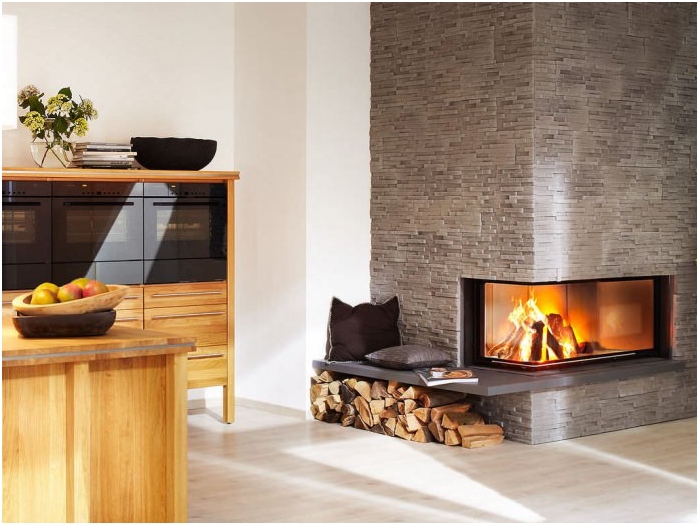
Advantages of decorative stone
Decorating the interior with decorative stone has advantages due to its properties:
- It is a material resistant to mechanical stress. It is difficult to scratch or split, thanks to which they can be used to finish those parts of rooms that easily lose their appearance (door portals, thresholds, protruding wall corners). High wear resistance results in high durability.
- The material is fireproof, it does not burn under any conditions.
- Artificial stone does not emit toxic substances into the air, it is safe for human health and the environment.
- The material can withstand large temperature changes, which makes it suitable for use in bathrooms and kitchens.
- Artificial stone is resistant to mold and mildew infection.
- This is a fairly light material, which excludes additional wall reinforcement before finishing.
- Artificial decorative stone in the interior retains its aesthetic appeal for a long time. Caring for it is simple – cleaning with a damp cloth as it gets dirty, you can also use detergents.
- The material has a wide range of colors and textures, allowing you to choose the desired option for decorating almost any interior in any possible style – from classic to high-tech.
The use of artificial stone as a material for finishing a room allows not only to give it originality and expressiveness, but also to further improve its functionality, as well as to maintain an attractive and neat appearance for a long time without repairs.
Tip: When decorating the interior with decorative stone, it is necessary to observe a sense of proportion so that the advantages of this finishing material do not turn into disadvantages. You can not trim the entire area of the walls with them – this will visually reduce the room. Also, you should not combine different types of stone in one interior – this makes it heavier for perception..
Competent use in the design of the possibilities that artificial stone provides will help make any room as convenient, comfortable and at the same time high-tech.
Decorative stone in the interior
Kitchen, living room, hallway or loggia – any room can be decorated with decorative stone interior decoration. It will help to divide the room into functional zones, or to combine parts of the room different in purpose into one semantic whole. For example, the areas of the kitchen and living room can be separated by an arch or a partition made of artificial stone..
Living room. If there is a fireplace in the living room, then it is usually trimmed with stone – this is a beautiful and traditional solution. In the cold season, stones are heated by the fire of the fireplace, and then for a long time they give off heat to the surrounding space. In hot summer they heat up very slowly and keep the room cool..
Artificial decorative stone in the interior of living rooms is used to design fireplace portals, mantel shelves, shelves, arched and niche structures, and also make window sills, console tables and other interior items from it.
Kitchen. Stone is one of the best materials for decorating a kitchen. It looks exquisite, it is easy to care for it, it can be used to make a worktop of any shape, including with a built-in sink, and the worktop can also include a window sill – and all this will be one whole. Not only countertops are made of stone, but also aprons, bar counters, niches and other kitchen elements.
Bedroom. In some styles, such as country or eco-style, decorative stone is used even in bedrooms. Moreover, it is used on one wall, most often at the head of the bed..
Entrance area. The hallway is the place where the use of stone in interior decoration is most justified. Stone decoration will last a long time without changing the appearance. In the event that the hallway is large, it will be decorated with stone columns and arches.


